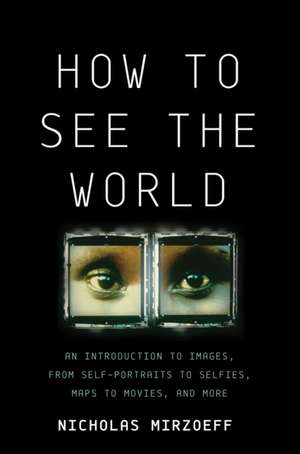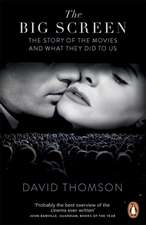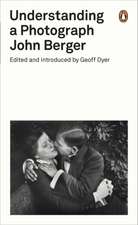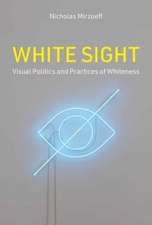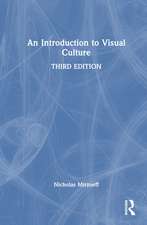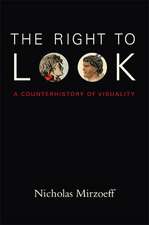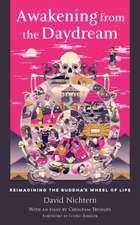How to See the World: An Introduction to Images, from Self-Portraits to Selfies, Maps to Movies, and More
Autor Nicholas Mirzoeffen Limba Engleză Hardback – 11 apr 2016
InHow to See the World, visual culture expert Nicholas Mirzoeff offers a sweeping look at history's most famous images—from Velázquez'sLas Meninasto the iconic “Blue Marble”—to contextualize and make sense of today's visual world. Drawing on art history, sociology, semiotics, and everyday experience, he teaches us how to close read everything from astronaut selfies to Impressionist self-portraits, from Hitchcock films to videos taken by drones. Mirzoeff takes us on a journey through visual revolutions in the arts and sciences, from new mapping techniques in the seventeenth century to new painting styles in the eighteenth and the creation of film, photography, and x-rays in the nineteenth century. In today's networked world, mobile technology and social media enable us to exercise “visual activism”—the practice of producing and circulating images to drive political and social change. Whether we are looking at pictures showing the effects of climate change on natural and urban landscapes or an fMRI scan demonstrating neurological addiction, Mirzoeff helps us to find meaning in what we see.
A powerful and accessible introduction to this new visual culture,How to See the Worldreveals how images shape our lives, how we can harness their power for good, and why they matter to us all.
| Toate formatele și edițiile | Preț | Express |
|---|---|---|
| Paperback (1) | 57.87 lei 22-33 zile | +19.96 lei 6-12 zile |
| Penguin Books – 3 iun 2015 | 57.87 lei 22-33 zile | +19.96 lei 6-12 zile |
| Hardback (1) | 307.02 lei 6-8 săpt. | |
| BASIC BOOKS – 11 apr 2016 | 307.02 lei 6-8 săpt. |
Preț: 307.02 lei
Nou
58.75€ • 62.82$ • 48.98£
Carte tipărită la comandă
Livrare economică 17 aprilie-01 mai
Specificații
ISBN-10: 046509600X
Pagini: 352
Ilustrații: 90 B&W illustrations
Dimensiuni: 152 x 219 x 32 mm
Greutate: 0.45 kg
Ediția:First Us.
Editura: BASIC BOOKS
Colecția Basic Books
Notă biografică
Recenzii
—Wendy Hui Kyong Chun, Professor and Chair, Modern Culture and Media, Brown University
“This book is a gem—clear, astute, and astonishingly insightful. Mirzoeff demonstrates virtuoso skills in making connections between images and visuality across global and social contexts, charting the histories of the self in art history to the selfie, showing us the meanings of sight itself, looking at how war is visualized and visually perpetrated, analyzing the visual domain of cities and climate, and making a powerful case for visual activism. Read this book and the field of visual culture will be yours.”
—Marita Sturken, Co-author ofPractices of Looking: An Introduction to Visual Culture
“In our fluid world, we need reminding how strange our visual culture has become. Artist John Berger did that job for the 1970s with his classic bookWays of Seeing; now Nicholas Mirzoeff teaches us how to ‘read' an astronaut's 2012 space-walk selfie – and how to decode military photos smothered with labels that claim to show weapons we cannot in fact see... Tracing the political, social and environmental implications of our visual culture, in words and black and white images, is a job of work. Mirzoeff succeeds: this is a dizzying and delightful book.”
—New Scientist, Best Reads from 2015
“Deploying a blend of semiotics, sociology, and art history, Mirzoeff shows us how to interpret everything from old masters to selfies, from Rashomon to a map of the Mississippi.... He also persuasively makes the case that visual culture is changing rapidly, thanks to the advent of the internet. Mirzoeff draws on theorists such as Benjamin, Foucault, and Deleuze, but thankfully is much clearer and easier to read than any of those writers.
—The Independent(UK)
“A lucid and accessible introduction to how images shape our lives and effect change, political and social… [How to See the World] offers numerous insights into ‘reading' the significance of images in the world today and is filled with intriguing, insightful nuggets. A challenging and provocative inquiry into how we see the world.”
—Kirkus Reviews
“In a wide-ranging exploration of our new visual landscapes, Nick Mirzoeff shows us how to think about what we see, from selfies to self-documenting social movements.”
—Clay Shirky, Associate Professor, NYU Arthur L. Carter Journalism Institute and author ofHere Comes Everybody
"A vivid demonstration of the power of visual studies to clarify and comprehend a wide variety of cultural and technical phenomena, from selfies to drone warfare. Magisterial in scope and perspicuous in style, this book is full of revelations for both specialists and general readers about the way we live now, and the new ways that we look at things. A worthy sequel to Mirzoeff's many notable contributions to visual studies, it is essential reading for anyone interested in media, technology, and the everyday practices of seeing.”
—W. J. T. Mitchell, Professor of English and Art History, University of Chicago and author ofWhat Do Pictures Want?
“Nicholas Mirzoeff's new book solidifies his reputation as a rangy, innovative theorist of visual culture. Paying careful attention to the history of the image alongside engaging accounts of technology, embodiment, neuroscience, war and space, Mirzoeff narrates multiple shifts and changes in how we see the world. Traveling to the moon and back, across continents and between eras, Mirzoeff nimbly and effectively narrates the visual regimes that regulate what we see, how we see, and what remains completely hidden from view.How To See the Worldis indispensable reading for the twenty-first century.”
—Jack Halberstam, Professor of American Studies and Ethnicity, Gender Studies, and Comparative Literature, University of Southern California and author ofThe Queer Art of FailureandGaga Feminism
“Nicholas Mirzoeff's wonderful new book traces the ways that sight—and seeing—transform the ways we understand and help change the world. Beautifully written, with a broad sweep of examples that speak to the power of images and encourage us to see and think in new ways, this is the go-to book for scholars and students in fields ranging from political science and anthropology to art history.”
—Suzanne Blier, Allen Whitehill Clowes Chair of Fine Arts and of African and African American Studies, Harvard University
Descriere
In recent decades, we have witnessed an explosion in the number of visual images we encounter, as our lives have become increasingly saturated with screens. From Google Images to Instagram, video games to installation art, this transformation is confusing, liberating and worrying all at once, since observing the new visuality of culture is not the same as understanding it.
Nicholas Mirzoeff is a leading figure in the field of visual culture, which aims to make sense of this extraordinary explosion of visual experiences. As Mirzoeff reminds us, this is not the first visual revolution; the 19th century saw the invention of film, photography and x-rays, and the development of maps, microscopes and telescopes made the 17th century an era of visual discovery. But the sheer quantity of images produced on the internet today has no parallels.
In the first book to define visual culture for the general reader, Mirzoeff draws on art history, theory and everyday experience to provide an engaging and accessible overview of how visual materials shape and define our lives.
